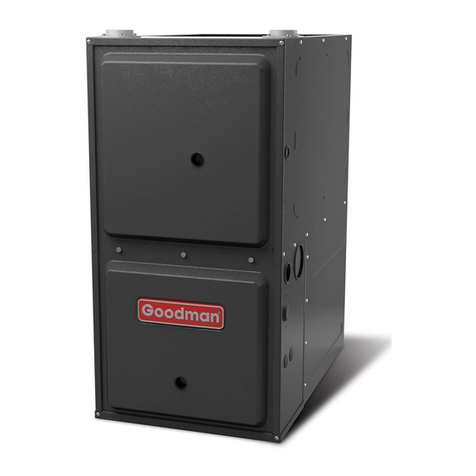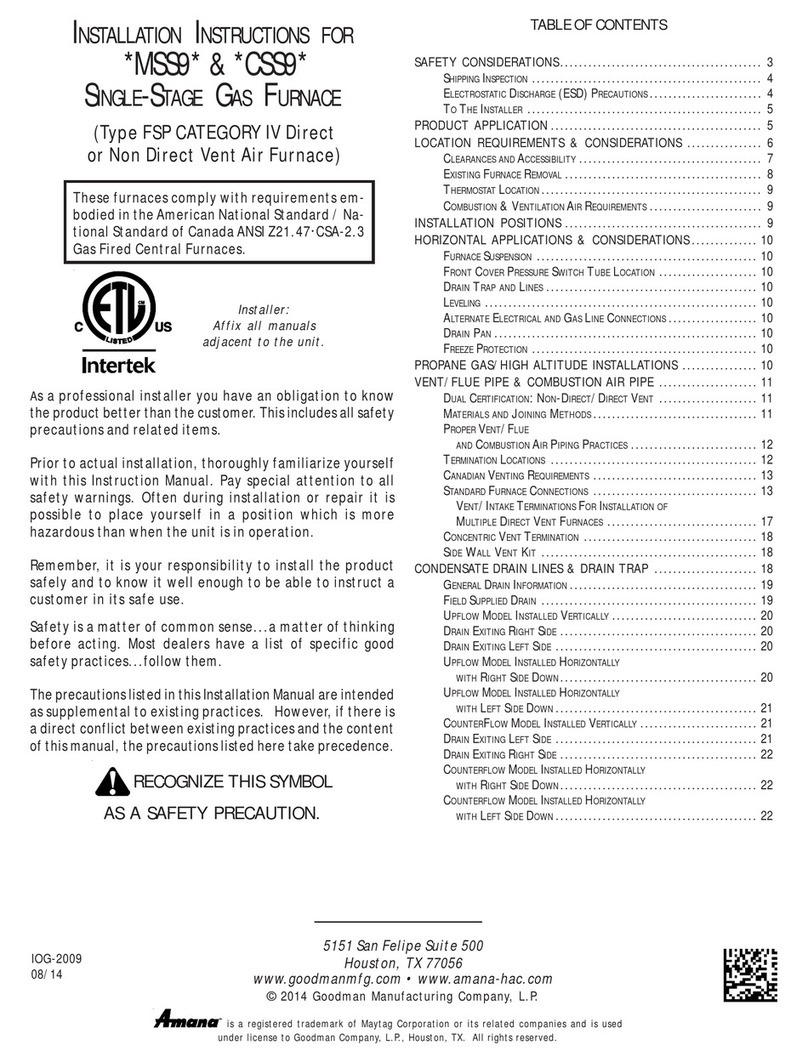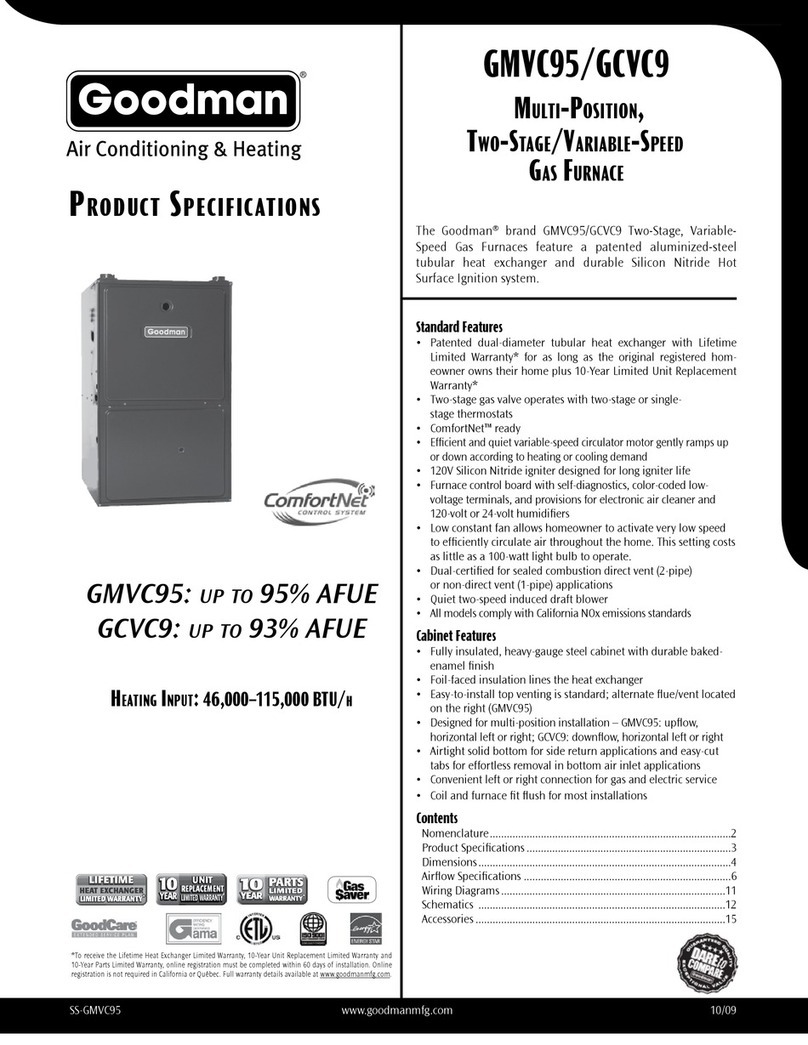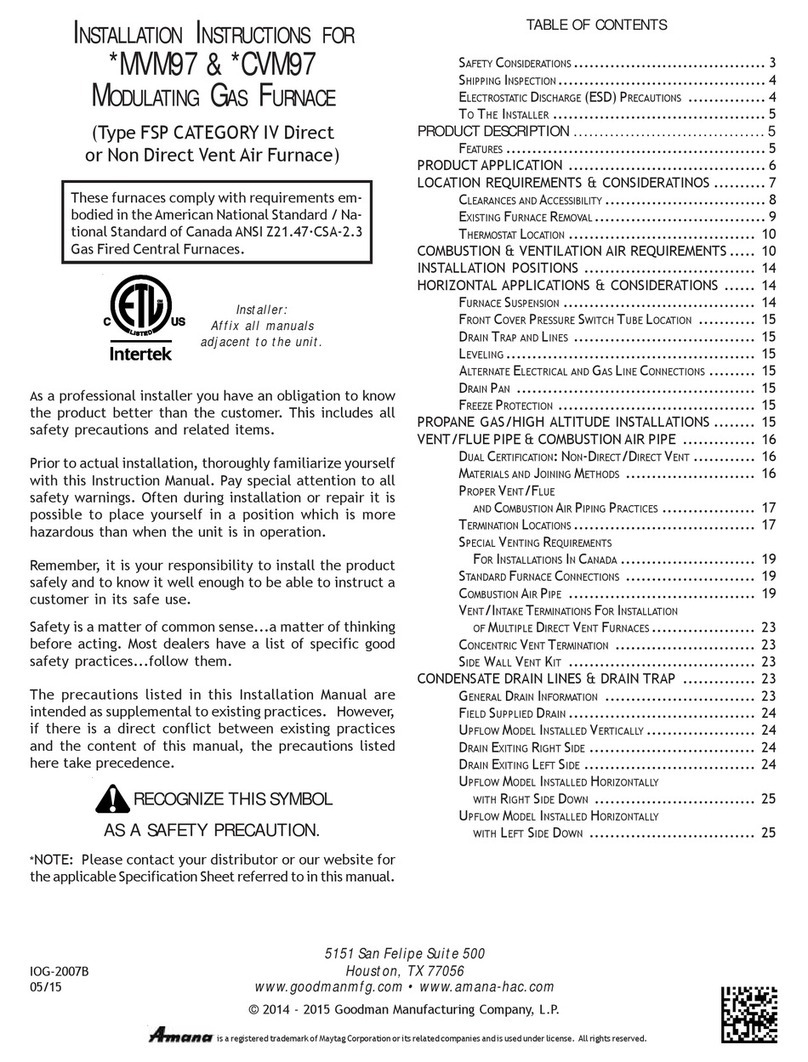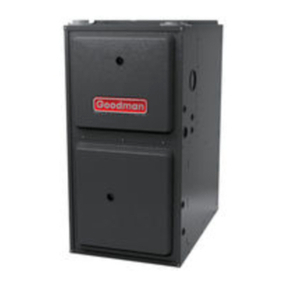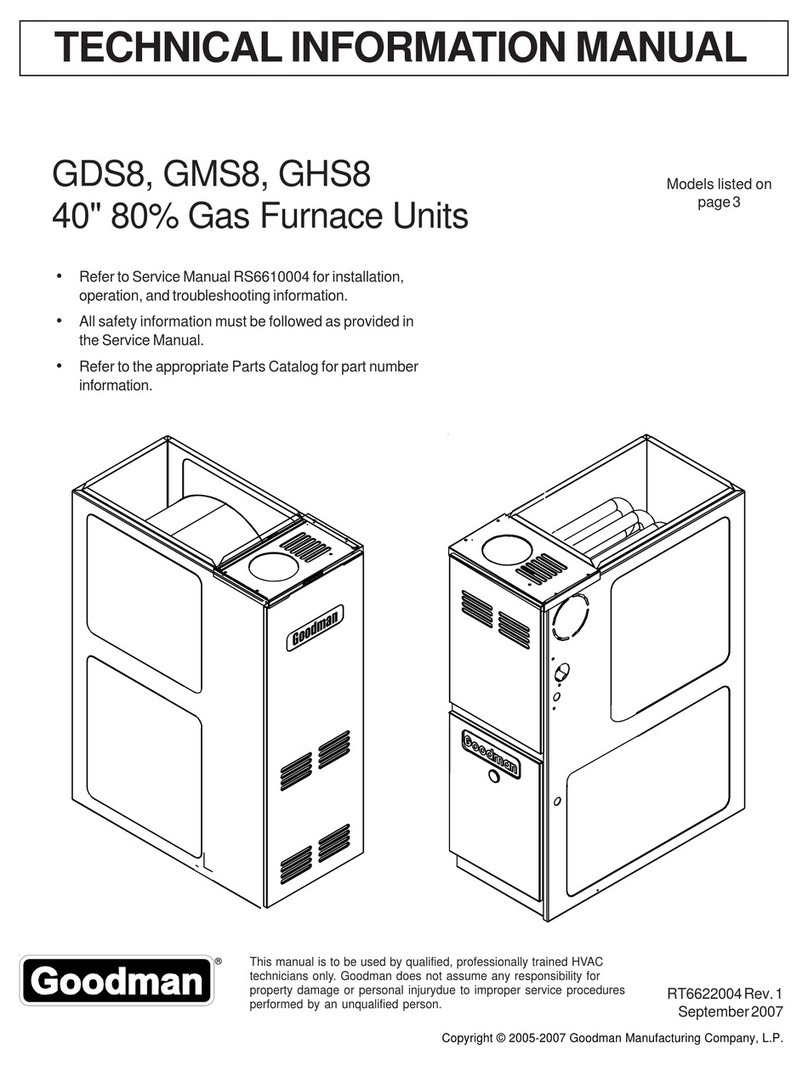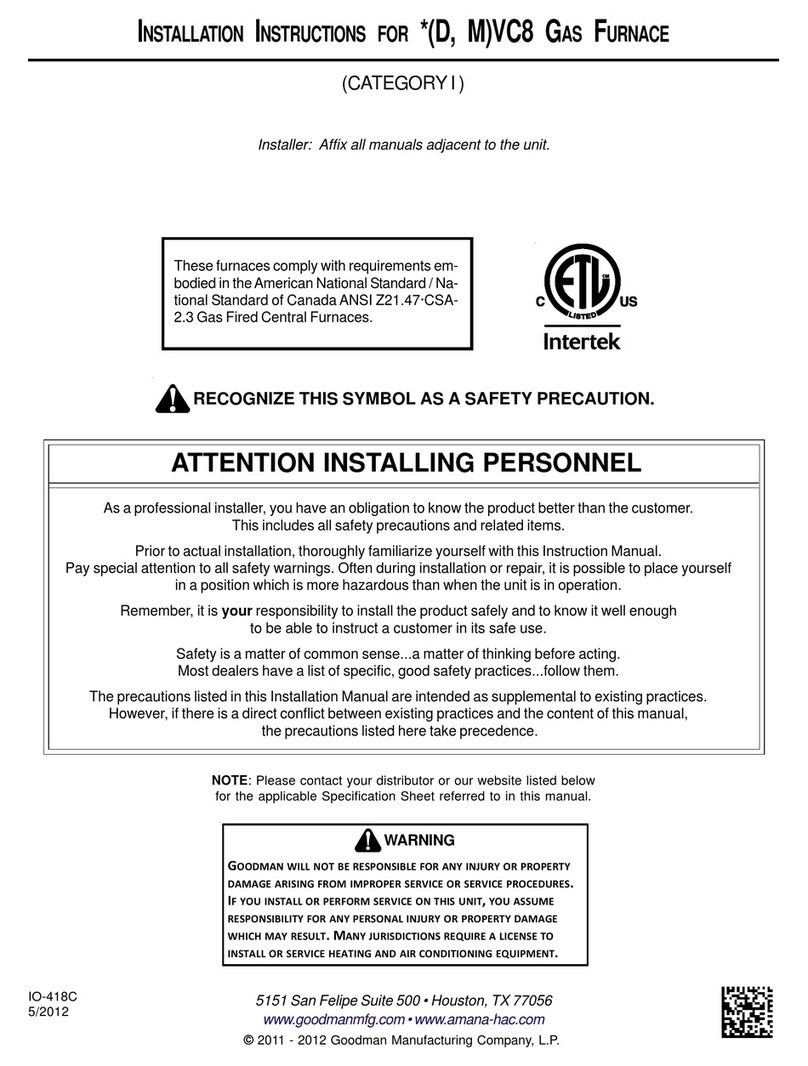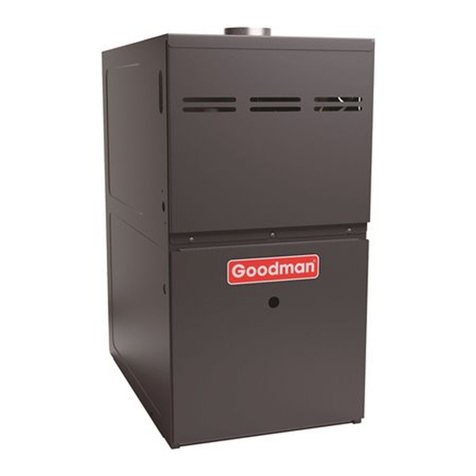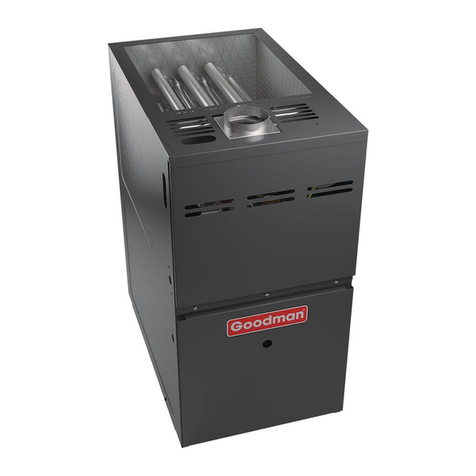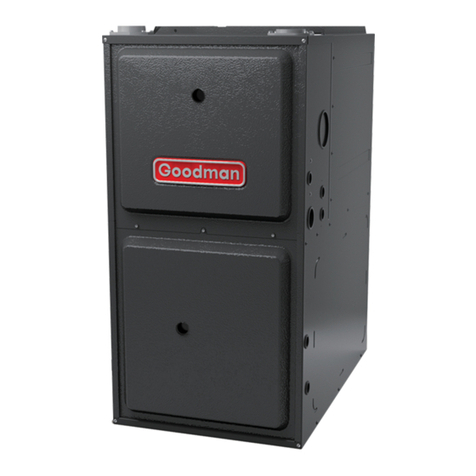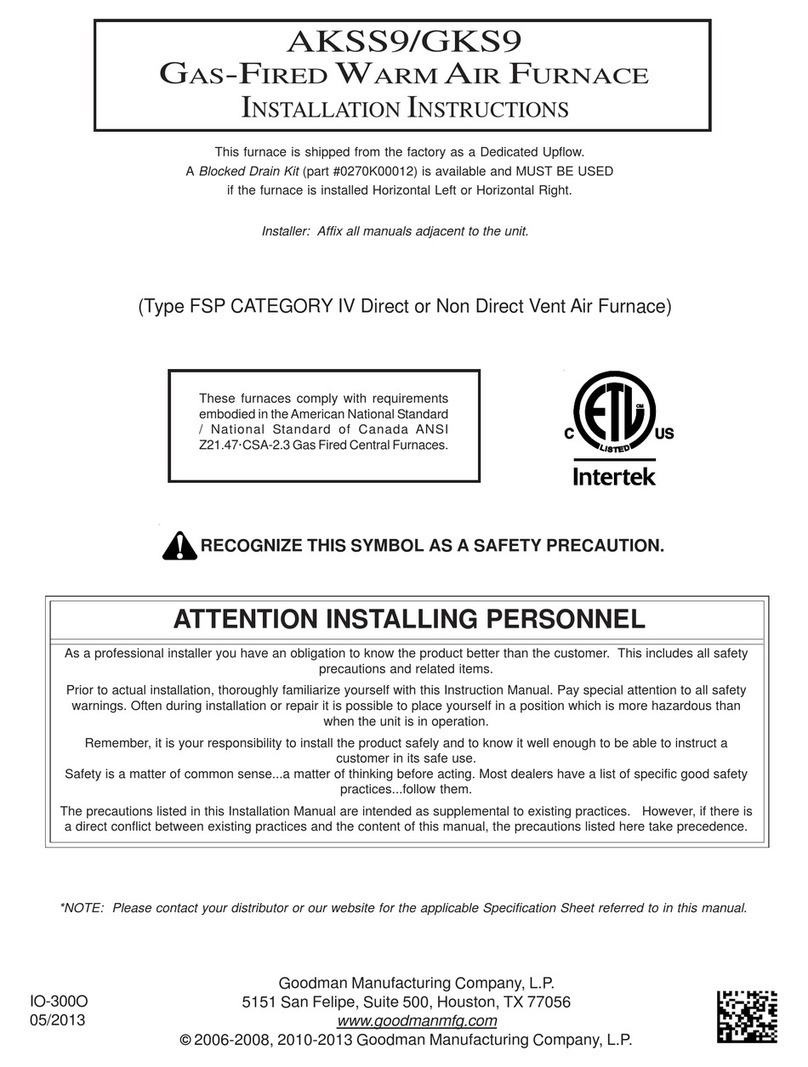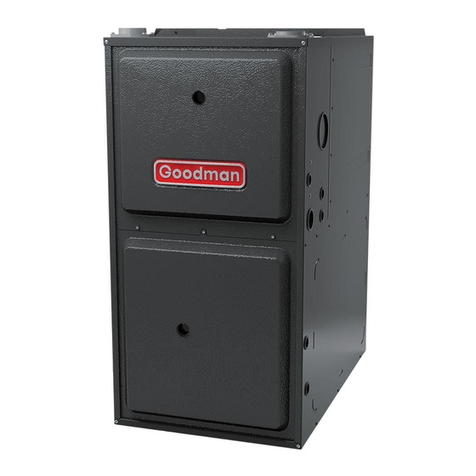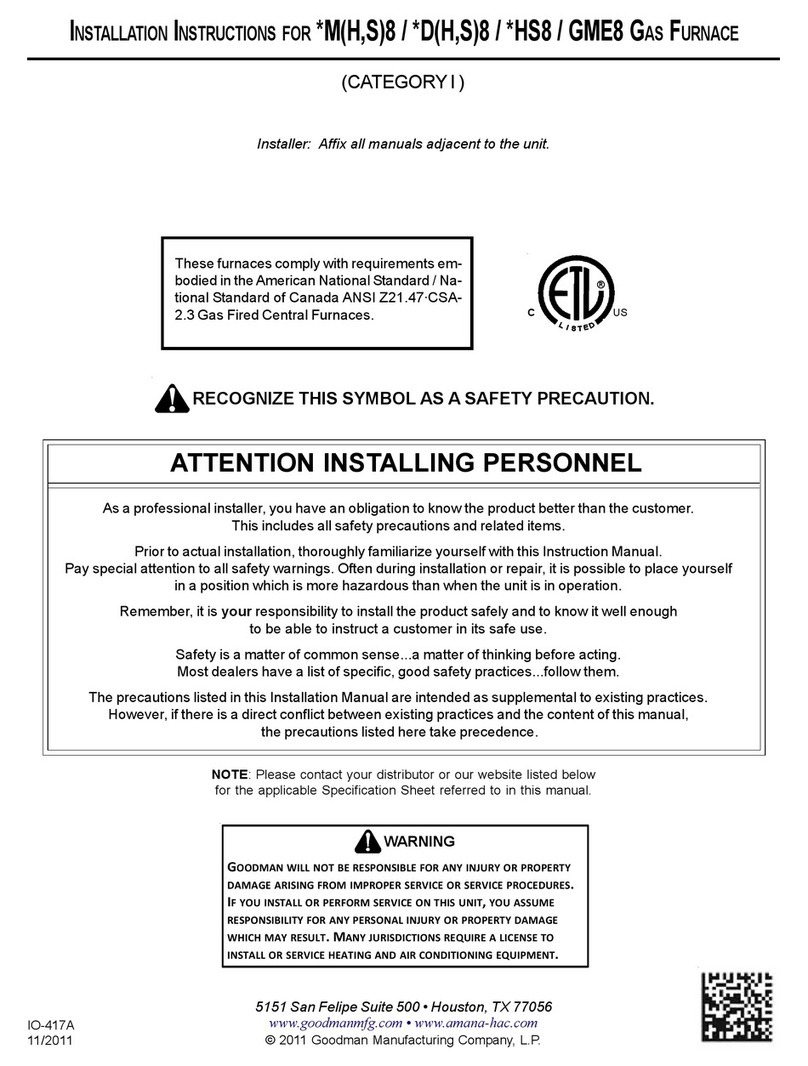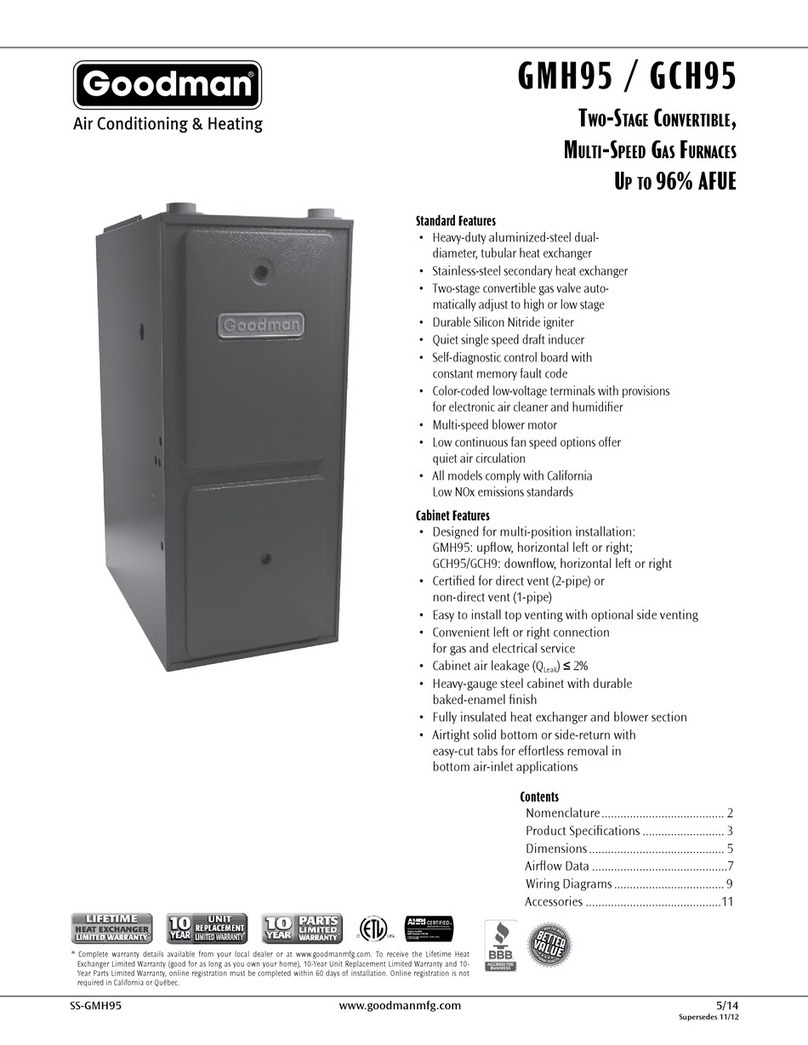
7
• Set the furnace on a level oor to enable proper
condensate drainage. If the oor becomes wet or
damp at times, place the furnace above the oor on
a concrete base sized approximately 1-1/2” larger
than the base of the furnace. Refer to the Horizontal
Applications and Considerations for leveling of
horizontal furnaces.
• Ensure upow or horizontal furnaces are not installed
directly on carpeting, or any other combustible
material. The only combustible material allowed is
wood.
• Exposure to contaminated combustion air will result
in safety and performance-related problems. Do
not install the furnace where the combustion air is
exposed to the following substances:
permanent wave solutions
carbon tetrachloride
deicing salts or chemicals
cleaning solutions (such as perchloroethylene)
paint removers
cements and glues
chlorinated waxes or cleaners
water softening chemicals
halogen type refrigerants
chlorine-based swimming pool chemicals
printing inks
varnishes
hydrochloric acid
antistatic fabric softeners for clothes dryers
• Seal o a non-direct vent furnace if it is installed
near an area frequently contaminated by any of
the above substances. This protects the non-direct
vent furnace from airborne contaminants. To ensure
that the enclosed non-direct vent furnace has an
adequate supply of combustion air, vent from a
nearby uncontaminated room or from outdoors.
Refer to the Combustion and Ventilation Air
Requirements for details.
• If the furnace is used in connection with a cooling
coil unit, install the furnace upstream or in parallel
with the cooling coil unit. Premature heat exchanger
failure will result if the cooling unit is placed ahead
of the furnace.
For vertical (upow or downow) applications, the
minimum cooling coil width shall not be less than
furnace width minus 1”. Additionally, a coil installed
above an upow furnace or under a counterow
furnace may be the same width as the furnace or
may be one size larger than the furnace. Example:
a “C” width coil may be installed with a “B” width
furnace. For upow applications, the front of the coil
and furnace must face the same direction.
• If the furnace is installed in a residential garage,
position the furnace so that the burners and ignition
source are located not less than 18 inches (457 mm)
above the oor. Protect the furnace from physical
damage by vehicles.
• If the furnace is installed horizontally, ensure the
access doors are not on the “up/top” or “down/
bottom” side of the furnace.
• Do not connect this furnace to a chimney ue that
serves a separate appliance designed to burn solid
fuel.
• On Counterow Installations, the air conditioning coil
must be downstream on the supply (positive) side
of the furnace heat exchanger.
• Counterow Installation over a noncombustible oor.
Before setting the furnace over the plenum opening,
ensure the surface around the opening is smooth
and level. A tight seal should be made between the
furnace base and oor by using a silicone rubber
caulking compound or cement grout.
• Counterow Installation over a combustible oor.
If installation over a combustible oor becomes
necessary, use an accessory subbase (see
Specication Sheet applicable for your model for
details.) A special accessory subbase must be
used for upright counterow unit installations over
any combustible material including wood. Refer
to subbase instructions for installation details.
Follow the instructions with the subbase for proper
installation. Do not install the furnace directly on
carpeting, tile, or other combustible material other
than wood ooring.
: The subbase will not be required if an air conditioning
coil is installed between the supply air opening on the furnace
and the oor.
• For servicing or cleaning, a 24” front clearance is
required.
• Unit connections (electrical, ue and drain) may
necessitate greater clearances than the minimum
clearances listed above.
• In all cases, accessibility clearance must take
precedence over clearances from the enclosure
where accessibility clearances are greater.
• For servicing or cleaning, a 24” front clearance is
required.
• Unit connections (electrical, ue and drain) may
necessitate greater clearances than the minimum
clearances listed above.
• In all cases, accessibility clearance must take
precedence over clearances from the enclosure
where accessibility clearances are greater.





